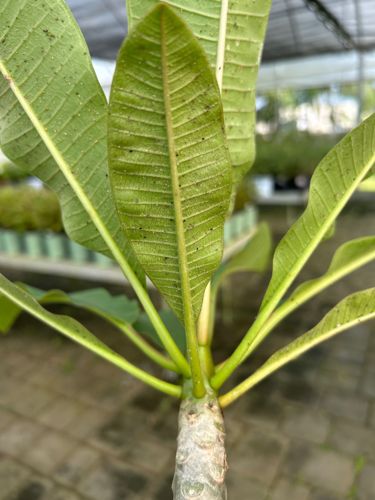Thrips
Scientific Name: Varies by species (e.g., Frankliniella occidentalis for Western Flower Thrips)
Order & Family: Order: Thysanoptera, Family: Varies (e.g., Thripidae, Phlaeothripidae)
Size: Typically 0.5 mm to 2 mm in length.

Natural Habitat
Widely distributed globally, found outdoors in gardens, greenhouses, and agricultural fields. They can also be found indoors on houseplants. They prefer warm, dry conditions.
Diet & Feeding
Plant sap and cell contents. They are known to feed on a wide variety of plants, including many ornamental plants like plumeria (which appears to be in the image) and various vegetable crops.
Behavior Patterns
Thrips feed by piercing plant cells and sucking out their contents. This causes the silvery speckling and tiny black dots (their excretions or 'frass') seen on the leaves. They reproduce rapidly, especially in warm conditions, leading to quick population build-ups.
Risks & Benefits
Risks: Significant agricultural and horticultural pests. They cause damage to plants by feeding, leading to distorted growth, reduced yields, and aesthetic damage. Thrips can also transmit plant viruses, which can be even more detrimental than their direct feeding. Benefits: Some thrips species are predatory and feed on other small insects and mites, making them beneficial biological control agents. However, the thrips causing damage in this image are almost certainly pest species.
Identified on: 8/28/2025